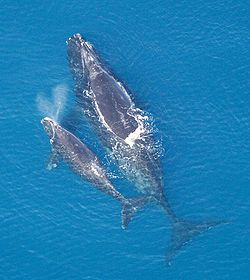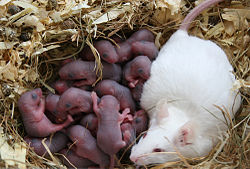r/K Selection Theory
Key Questions
-
In a nutshell, R selected populations are more "YOLO" type while K selected populations are more "dig in and play for the future" type.
Let me tell you what I mean.
Basically, R selected populations are species that have very high mortality rates amongst their young. In other words they lose a lot of their young. Hence, these species are mostly tuned to endorse in a lot of reproduction, and spend less energy in parenting. For example, flies just have a ton of offspring, and don't really care about nurturing them. As a result, not a lot of them survive. In a nutshell, R selected populations focus on quantity over quality. They are mostly geared towards the time of repopulation, when an ecosystem needs to be "filled up" again.
K selected populations, on the other hand, are species that have very low mortality rates at childbirth. They have few offspring, but put more energy into nurturing them. For example, humans usually have about 2-3 offspring on average, but we nurture them very well (at least most of the time), and prepare them to endure the world and live a long life. Therefore, you could say that K selected populations go for quality over quantity. These are mostly geared towards surviving for long periods of time, and thriving in stable ecosystems.
Hope that helped :)
-
K selected organisms produce few offspring but invest a lot of energy in them, and examples would include whales, primates (which includes humans), elephants, and some birds, like arctic terns.
This is opposed to r selected species, which produce a lot of offspring but tend to invest relatively little energy in them. Most fish and rodents would be considered r selected. You can sort of think of it as quality (K selected) vs quantity (r selected). That's a simplification of course, but it helps.
Neither K or r selection is necessarily better; both have advantages and disadvantages.
Keep in mind though that a lot of organisms lie between these two and that r/K selection theory has fallen a bit out of favor over the last few decades. Still though, it is helpful in understanding organisms' life histories.
For more info, check out this helpful video:
Bozeman Bio r/K selection
-
Answer:
R-selected organisms, those emphasizing a fast growth rate, high number of offspring, include rabbits, bacteria, salmon, plants such as weeds and grasses, etc.
Explanation:
The strategy for R-selected organisms includes producing a lot of offspring, producing them often, and having a relatively short lifespan. R-selected species usually don't care for offspring, whereas k-selected species such as orangutans will provide care (orangutan offspring live with their mothers for up to eight years).
Examples include rabbits, bacteria, salmon, plants such as weeds and grasses, etc. Many insects are r-selected. For example, ants can be considered r-selected. Plants such as dandelions are another good example of an r-selected species.

The r/k selection theory should be thought of as a spectrum. Some organisms may produce a medium number of offspring but those offspring still grow quickly and the parents provide little care. Sea turtles are a good example of a species that fits somewhere in the middle. The produce many eggs and do not care for their offspring once the eggs have been laid, but turtles live very long lives.
-
This theory was more popular in the 1970's and has lost some favor because of the inability to test it.
K-selected species expend high cost in reproduction for a low number of more difficult-to-produce offspring.
"A North Atlantic right whale with solitary calf. Whale reproduction follows a K-selection strategy, with few offspring, long gestation, long parental care, and a long period until sexual maturity."

r-selection makes a species prone to numerous reproduction at low cost per individual offspring. This would be seen in rodents with many offspring. short gestation, short parental care and a short time until the off spring can reproduce.

Reptiles and turtles have both r and K while male humans have r and females have K. It is thought that K species will replace r species in what is called a climax ecosystem.